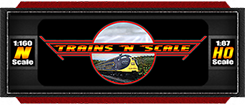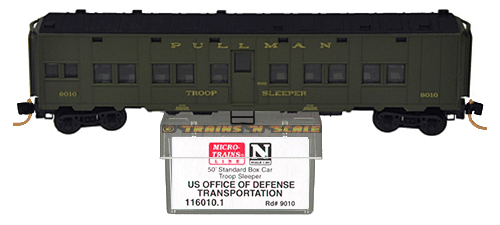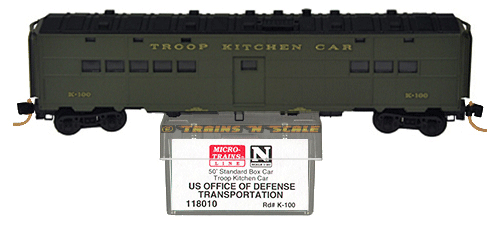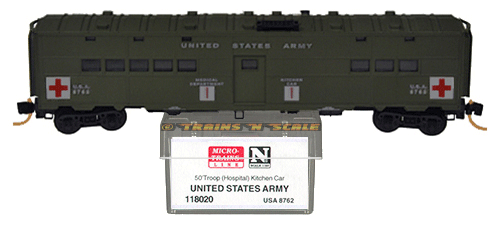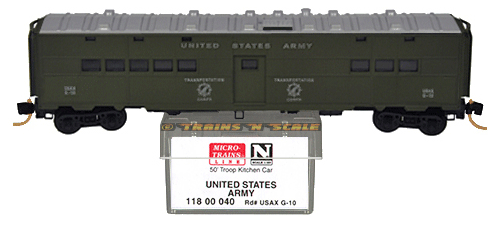 Loading... Please wait...
Loading... Please wait...-
Call us at: 941-500-2288
-
Mail Us at: Trains N Scale P.O. Box 178 Lehigh Acres, FL 33970-0178
- My Account
- Items / $0.00
All prices are in All prices are in USD
Categories
- Home
- Models and Prototypes Blog
- America Goes To War: United States Army Office of Defense Troop Cars
America Goes To War: United States Army Office of Defense Troop Cars
Posted by Nevile C. Wilson on 17th Jun 2017
With no Interstate highway
system and few passenger aircraft readily available, World War II troop
movements within the
Needing to move huge numbers of enlisted personnel to and from various bases and assignments, the government found itself lacking enough standard railway passenger cars to complete this daily task.

Manufactured along the lines of standard Association of American Railroads (AAR) fifty foot steel boxcars, with their Allied Full Cushion high-speed swing motion trucks, light-weight passenger car-like flat ends and doors, freight car-like floors, roofs, and sides, a row of windows, and a centered door along each body side, designed to utilize existing design elements, fixtures, manufacturing lines, materials, and production equipment, while balancing the nation's need for steel to construct tanks and ships, the assemblage of hybrid troop cars efficiently resolved the issue of railroad passenger equipment shortages.
Requisitioned by the U.S. Office of Defense Transportation, the Pullman-Standard Car Manufacturing Company produced 2,400 troop sleepers and 10 kitchen cars, while American Car & Foundry built 440 kitchen cars and 200 hospital cars.
Painted olive drab with
"
Dependant upon car availability, a typical troop train consist was comprised of an assortment of coaches, troop sleepers for enlisted men, standard full-sized Pullmans for officers, and mid-consist kitchens, which were staffed by U.S. Army cooks and designed to feed approximately 250 men each.
In service through 1947, the U.S. Army Transportation Corps sold the bulk of its lightly used fleet of troop cars to railroad companies, who ended up converting some of their acquisitions into baggage cars, cabooses, express service boxcars, mail storage cars, or refrigerator cars.
Utilized as railroad Maintenance of Way (MOW) bunk cars, some of the military surplus troop sleepers retained their sleeper configurations.
Carrying USAX reporting
marks and road numbers with a "G" prefix, three of the troop kitchens
were converted at
Image Courtesy of Pacific Southwest Railway Museum Association. W. Schneider
Released in August 2009, with its extra body side windows and conspicuously absent offset cupola, the N Scale Micro-Trains Line stock number 118 00 040 United States Army Railway Guard Car G-10 release is a "foobie" that could be modified to more accurately simulate the restored prototype, which resides at Campo, California's Pacific Southwest Railway Museum Association.
View additional articles like this one in the Trains N Scale™ Models and Prototypes Blog.
Recent Posts
- » A Quick Look: InterMountain Fox Valley Red Caboose Autoracks Review
- » A Quick Look: Athearn 2293 N UPS Wedge Trailers and Dolly
- » A Quick Look: Atlas N 1993 Ford Explorer SUV 5th Run Review
- » A Quick Look: Eastern Seaboard Models N Metal Wheel-Sets Review
- » A Quick Look: Jacksonville Terminal JTC NSC 53' Well Cars Review
